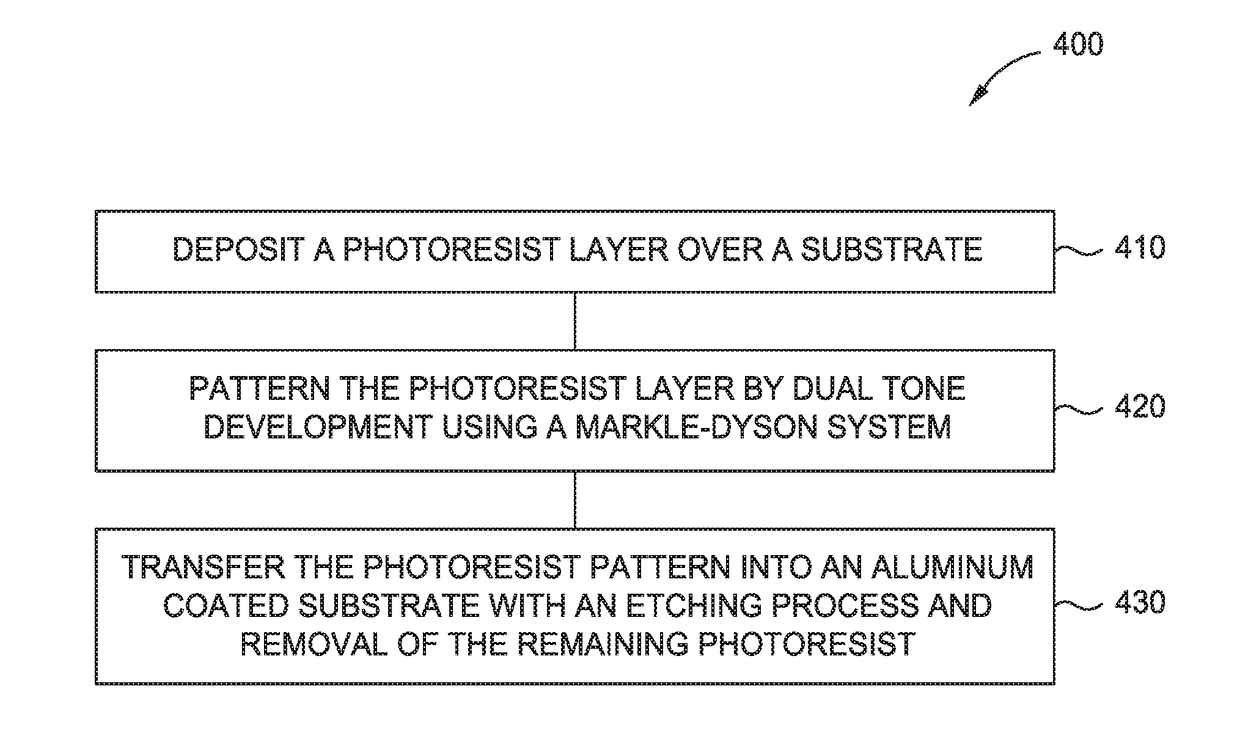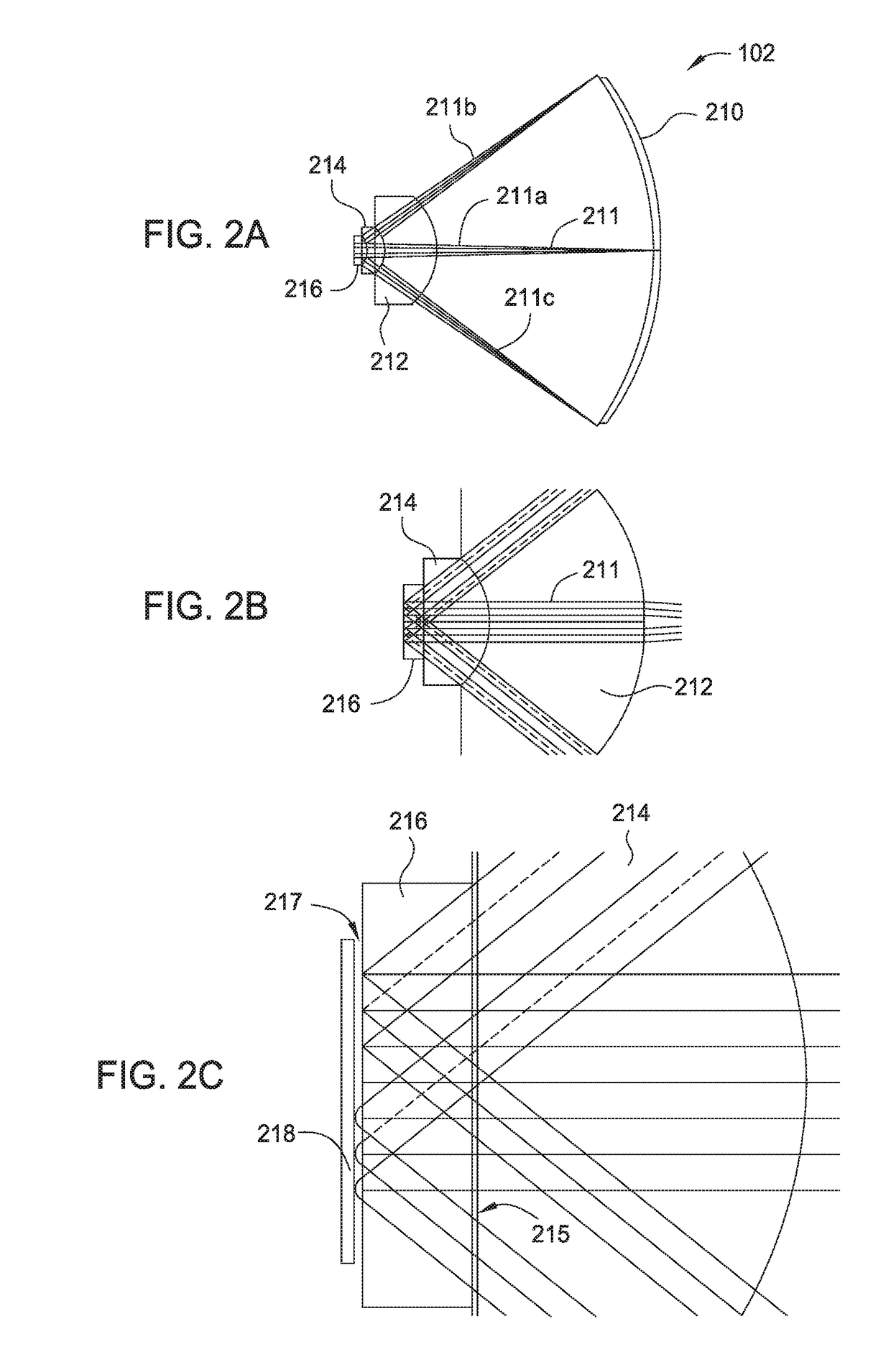Wire grid polarizer manufacturing methods using frequency doubling interference lithography
- Summary
- Abstract
- Description
- Claims
- Application Information
AI Technical Summary
Benefits of technology
Problems solved by technology
Method used
Image
Examples
Embodiment Construction
[0025]The present disclosure generally relates to methods and systems for manufacturing wire grid polarizers (WGP) using Markle-Dyson exposure systems and dual tone development (DTD) frequency doubling. In one embodiment, the method includes depositing a photoresist layer over an aluminum-coated display substrate, patterning the photoresist layer by dual tone development using a Markle-Dyson system to form a photoresist pattern, and transferring the photoresist pattern into the aluminum-coated display substrate to manufacture a WGP having finer pitch, for example less than or equal to about 100 nm, and increased frequency.
[0026]FIG. 1 is a system 100 for printing a WGP pattern onto a flat panel display substrate. The system 100 includes a plurality of Markle-Dyson (or “half Dyson”) exposure systems 102 (six are shown), a laser gage 104, a laser gage mirror 106 and a substrate stage 109. The plurality of Markle-Dyson exposure systems 102 are generally evenly distributed across the wi...
PUM
 Login to View More
Login to View More Abstract
Description
Claims
Application Information
 Login to View More
Login to View More - R&D
- Intellectual Property
- Life Sciences
- Materials
- Tech Scout
- Unparalleled Data Quality
- Higher Quality Content
- 60% Fewer Hallucinations
Browse by: Latest US Patents, China's latest patents, Technical Efficacy Thesaurus, Application Domain, Technology Topic, Popular Technical Reports.
© 2025 PatSnap. All rights reserved.Legal|Privacy policy|Modern Slavery Act Transparency Statement|Sitemap|About US| Contact US: help@patsnap.com



